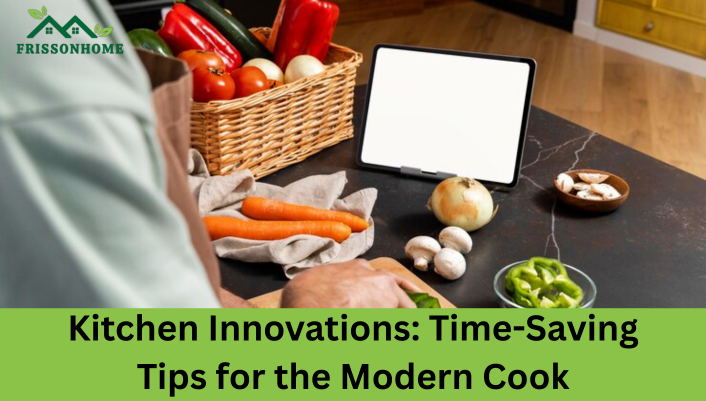DrHomey Handy Tips offer a treasure trove of practical solutions for homeowners seeking to enhance their living spaces without breaking the bank. Whether you’re embarking on DIY home projects, aiming for budget-friendly renovations, or striving to create a more sustainable living environment, these tips provide expert guidance tailored to your needs.
From smart home technology integrations to essential home maintenance tips, DrHomey’s advice empowers you to take control of your home’s transformation. Embrace these insights to not only improve your home’s functionality and aesthetics but also to foster a healthier, more efficient living space that aligns with modern standards and personal comfort.
Transforming Your Space: Smart Organization Strategies
Organizing your home efficiently is the first step toward creating a harmonious living environment. Start by decluttering; if you haven’t used an item in the past year, it’s time to let it go. This practice not only frees up space but also reduces mental clutter.
Implementing strategic storage solutions can make a significant difference. Designate specific areas for items based on their use, such as keeping cooking utensils near the stove and storing seasonal clothing in labeled bins. This approach minimizes time spent searching for items and maintains order.
Establishing daily maintenance habits is crucial. Spend just five minutes each day tidying up—wiping down surfaces, putting away items, and straightening cushions. Over time, these small actions prevent messes from accumulating and keep your home consistently organized.
DIY Repairs: Empowering Homeowners with Essential Skills
Taking on easy DIY home improvement projects can be both empowering and cost-effective. Start with simple tasks like fixing a leaky faucet. Often, replacing the O-ring can solve the problem without the need for a plumber.
For wall repairs, learn the three-step process: clean the hole, apply mesh tape, and layer spackle from thin to thick. This method ensures a smooth finish and restores the wall’s integrity.
Maintaining a seasonal home maintenance checklist helps prevent larger issues. Regularly inspect areas like gutters, HVAC systems, and weatherproofing to address potential problems before they become costly repairs.
Kitchen Innovations: Time-Saving Tips for the Modern Cook
The kitchen is the heart of the home, and optimizing it can save both time and energy. Implementing time-saving kitchen strategies such as meal prepping and using one-pan recipes can streamline cooking and reduce cleanup time.

Organize your kitchen into zones—prep, cooking, and cleaning—to create an efficient workflow. Store frequently used items within easy reach and consider investing in energy-efficient appliances to reduce energy consumption.
Regularly clean and maintain appliances to ensure they operate at peak efficiency. This not only extends their lifespan but also contributes to a healthier cooking environment.
Creating a Healthier Home Environment
A healthy home environment goes beyond cleanliness; it encompasses air quality, moisture control, and the use of non-toxic materials. Incorporate tips for creating a healthier home environment by choosing low-VOC paints, using natural cleaning products, and ensuring proper ventilation.
Regularly change HVAC filters and consider adding air purifiers to reduce allergens and pollutants. Keep humidity levels in check to prevent mold growth and maintain overall indoor air quality.
Opt for sustainable materials like bamboo flooring or cork tiles, which are both eco-friendly and contribute to a healthier indoor environment.
Outdoor Living: Extending Your Home’s Reach
Enhancing your outdoor living spaces can provide additional areas for relaxation and entertainment. Start by creating functional zones—such as dining, lounging, and gardening areas—to maximize the use of your outdoor space.
Incorporate enhancing outdoor living areas by adding features like fire pits, outdoor kitchens, or comfortable seating. Choose durable, weather-resistant furniture and consider installing lighting to extend the usability of your outdoor spaces into the evening.
Regular maintenance, such as cleaning gutters, sealing decks, and caring for plants, ensures your outdoor areas remain inviting and functional year-round.
Energy Efficiency: Smart Solutions for Sustainable Living
Implementing energy-saving home upgrades not only reduces your carbon footprint but also lowers utility bills. Start with simple changes like switching to LED lighting, sealing drafts around windows and doors, and upgrading to energy-efficient appliances.
Consider investing in renewable energy sources such as solar panels or heat pumps. These systems can significantly reduce energy consumption and may qualify for tax credits, making them a cost-effective long-term investment.
Regularly conduct energy audits to identify areas where your home can improve in efficiency. Many utility companies offer free or discounted audits to help homeowners make informed decisions.
Home Office: Balancing Productivity and Comfort
With remote work becoming more prevalent, designing a functional and comfortable home office is essential. Choose a quiet location with ample natural light and invest in ergonomic furniture to promote good posture and reduce strain.
Incorporate elements that enhance focus and creativity, such as plants, artwork, or inspirational quotes. Ensure your workspace is organized and free from distractions to maintain productivity.
Regularly assess your home office setup to make adjustments as needed, ensuring it continues to meet your work requirements and personal comfort.
Budget-Friendly Upgrades with Maximum Impact
Home improvements don’t have to be expensive to be effective. Focus on budget-friendly renovations that offer high returns on investment. Simple updates like painting walls, replacing hardware, or updating lighting fixtures can dramatically change the look and feel of a room.
Shop smart by looking for sales, using coupons, or purchasing gently used items. Consider DIY projects where possible to save on labor costs.
Prioritize upgrades that will have the most significant impact on your daily life and home’s value. Even small changes can make a big difference in creating a space you love.
Read More: DecoratorAdvice.com: Your Ultimate Guide to Home Decor Mastery in 2025
Safety First: Protecting Your Home and Loved Ones
Ensuring your home is safe is paramount. Start by installing smoke detectors in every room and carbon monoxide detectors near sleeping areas. Regularly test these devices to ensure they’re functioning correctly.

Secure heavy furniture to walls to prevent tipping accidents and keep sharp objects out of reach of children. Install safety gates where necessary and use outlet covers to protect young children from electrical hazards.
Maintain an emergency kit with essentials like flashlights, batteries, first aid supplies, and important documents. Regularly review and update your safety measures to adapt to any changes in your household.
Conclusion: Embracing the Future of Home Living
Transforming your home into a smart, sustainable, and stylish space is achievable with thoughtful planning and intentional upgrades. By focusing on home improvement strategies that prioritize efficiency, comfort, and aesthetics, you can create a living environment that supports your lifestyle and values.
Remember, the journey to a better home is ongoing. Regularly assess your space, stay informed about new trends and technologies, and make adjustments as needed to continue enhancing your home’s functionality and appeal.
FAQs
How can I renovate my home on a budget?
Start with small, impactful changes like painting walls, updating hardware, or rearranging furniture. Focus on DIY projects and prioritize upgrades that offer the most significant return on investment.
What are some easy DIY home improvement projects?
Consider tasks like installing a backsplash, replacing light fixtures, or building simple shelving units. These projects can be accomplished with minimal tools and experience.
How can I create a healthier home environment?
Choose non-toxic paints and cleaning products, ensure proper ventilation, and incorporate plants to improve air quality. Regularly clean and maintain HVAC systems to reduce allergens.
What are energy-saving home upgrades?
Install LED lighting, seal drafts, upgrade to energy-efficient appliances, and consider renewable energy sources like solar panels. These changes can reduce energy consumption and lower utility bills.
How can I design a functional home office?
Select a quiet location with natural light, invest in ergonomic furniture, and minimize distractions. Keep your workspace organized and personalize it to enhance comfort and productivity.
How can I enhance my outdoor living areas?
Create functional zones for dining, lounging, and gardening. Add features like fire pits, outdoor kitchens, or comfortable seating. Choose durable furniture and install lighting to extend usability.
How can I maintain home safety?
Install smoke and carbon monoxide detectors, secure heavy furniture, and keep hazardous items out of reach of children. Maintain an emergency kit and regularly review safety measures.
How can I organize my home efficiently?
Declutter regularly, implement strategic storage solutions, and establish daily maintenance habits. Designate specific areas for items based on their use to maintain order.
What are time-saving kitchen strategies?
Meal prep in advance, use one-pan recipes, and organize your kitchen into zones. Store frequently used items within easy reach and clean as you go to reduce cleanup time.
What is a seasonal home maintenance checklist?
Create a schedule for tasks like cleaning gutters, servicing HVAC systems, and weatherproofing. Regular maintenance prevents larger issues and ensures your home remains in good condition.





